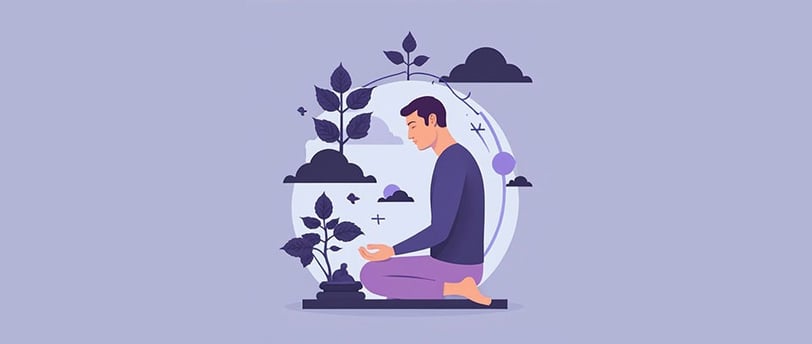Identifying Triggers and Patterns
Part 50 in our series, “5 Steps to a More Fulfilling Life.”
SELF HELP
Marcelo Silva
4 min read


Identifying triggers and patterns is a crucial step in breaking free from negative habits and creating positive change in our lives. Triggers are the specific cues or stimuli that prompt us to engage in certain behaviors, while patterns refer to the recurring sequences of thoughts, emotions, and actions that accompany those behaviors. By pinpointing these triggers and patterns, we can gain valuable insight into the underlying mechanisms driving our habits and develop strategies for overcoming them.
Triggers can take many forms, ranging from external cues such as specific environments or social situations to internal cues such as emotions or thoughts. For example, a stressful day at work might trigger the habit of reaching for unhealthy snacks as a form of comfort, while feelings of boredom or loneliness might lead to excessive screen time or mindless scrolling on social media. By paying attention to the circumstances surrounding our negative habits, we can begin to identify common triggers and anticipate situations that are likely to provoke them.
Patterns, on the other hand, refer to the sequences of thoughts, emotions, and actions that occur before, during, and after engaging in a negative habit. These patterns often follow a predictable sequence, starting with a trigger that prompts a specific thought or emotion, leading to the behavior itself, and culminating in a reward or consequence. For example, a pattern of procrastination might involve feeling overwhelmed by a looming deadline (trigger), experiencing thoughts of doubt or inadequacy (pattern), procrastinating on the task by engaging in distracting activities (behavior), and feeling temporary relief or avoidance of discomfort (reward).
By identifying these triggers and patterns, we can interrupt the habit loop and create opportunities for change. One effective strategy is to keep a habit journal or tracker, where we can record our thoughts, emotions, and behaviors related to our negative habits. This allows us to identify common triggers and patterns and track our progress over time as we work to break free from them. Additionally, practicing mindfulness and self-awareness can help us become more attuned to our internal experiences and recognize the thoughts and emotions that precede our habits.
Once we have identified our triggers and patterns, we can begin to develop strategies for managing them more effectively. This might involve finding healthier ways to cope with stress or negative emotions, such as practicing mindfulness meditation, engaging in physical activity, or seeking support from friends or loved ones. It could also involve changing our environment to remove or minimize triggers that contribute to our negative habits, such as decluttering our workspace to reduce distractions or setting boundaries with people who enable our unhealthy behaviors.
In conclusion, identifying triggers and patterns is an essential step in overcoming negative habits and creating positive change in our lives. By becoming more aware of the circumstances, thoughts, and emotions that drive our habits, we can interrupt the habit loop and develop healthier alternatives. With practice and persistence, we can break free from limiting behaviors and cultivate habits that support our well-being and success.
Ready for more? Click here to read the next post in this series, Developing Coping Strategies.
Looking for something specific? The Table of Contents below offers quick links to all the posts in this series.
Table of Contents:
Introduction: 5 Steps to a More Fulfilling Life
Step 2: Cultivating a Growth Mindset
Copyright 2024 Mind, Body, and Spirit.blog. All Rights Reserved. Our website services, content, and products are for informational purposes only. Mind, Body, and Spirit.blog does not provide medical advice, diagnosis, or treatment. Displayed ads do not constitute endorsement or recommendation by Mind, Body, and Spirit.blog.
Home | Blog | About | Sitemap | Privacy Policy
